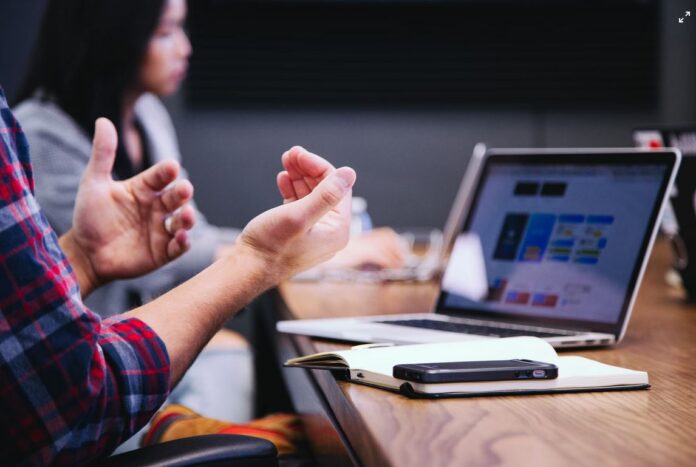This op-ed was originally published in the St. Louis Post-Dispatch on May 12, 2024. It is being republished here with the permission of the author.
by Ed Shew
Cultural differences, stereotyping, unconscious bias, struggles with identity crisis, the myth of the “model minority,” and the “perpetual foreigner” syndrome are challenges facing Asian Americans, Native Hawaiians and Pacific Islanders.
When “We the People” is bandied about — a phrase meant to represent all Americans regardless of the differences among us — too often it is drowned out by taunts of “Go back where you came from,” or the more subtle, “But where are you really from?”
America this month celebrates Asian American, Native Hawaiian and Pacific Islander (AANHPI) Heritage Month. It’s ironic that this comes amid a continuing backlash against the concept of diversity, equity and inclusion (DEI) in our nation.
May commemorates the first known Japanese immigrant to the U.S. on May 7, 1843. In addition, the first transcontinental railroad was completed on May 10, 1869, by over 12,000 Chinese laborers. Their reward? The Chinese Exclusion Act of 1882, the only major U.S. law to ban immigration for a specific nationality.
In echoes of that sentiment today, some elected officials openly push racial segregation, race- and religious-based nationalism, race-based immigration barriers, and a rollback of women’s reproductive and LGBTQ rights.
Diversity, equity, and inclusion are organizational frameworks which seek to promote the fair treatment and full participation of all people, particularly groups who have historically been underrepresented or subject to discrimination on the basis of identity or disability.
Yet that hasn’t stopped officials like Missouri Secretary of State Jay Ashcroft from tweeting last year that a job posting for a “diversity, inclusion and belonging leader” within the Missouri Department of Natural Resources was an example of “left-wing indoctrination in the workplace” and the wrong use of taxpayer dollars.
Politicians’ criticism of DEI has an impact. The University of Missouri announced last year that its four campuses are eliminating DEI statements in their job posts. The Francis Howell School Board recently attempted to eliminate elective courses in Black history and in Black literature from the district’s curriculum, before public outcry and national publicity forced it to backtrack.
Some lawmakers and school boards want to bar public schools from teaching “divisive concepts” like the alignment of slavery and racism. Ashcroft and this ilk consider it divisive to even mention such truths. They argue that DEI is toxic and has no place in our workforce and schools.
Contrast that with the words of Danielle Tormala, superintendent of Wentzville Schools. “The terms diversity, equity and inclusion cannot be dirty words in this district,” she said last year, during controversy over alleged bullying of Black students in the district. Tormala later resigned after what her allies say was relentless hounding by right-wing activists.
DEI is mistakenly identified as discrimination against white people. Never mind that DEI isn’t only about race; it also helps women, the LGBTQ or those with disabilities.
I believe DEI connects people, forming a bridge between what communities need and what opportunities and resources we can access. It’s on this bridge where concepts of diversity, equity and inclusion serve as our guides, helping to ensure fairness in how we get to our destination. But attacks against that bridge are escalating. And it’s taking us, unfortunately, back to a time that failed to acknowledge the inequities that persist today based on discriminatory practices.
That’s why it is important this month to recognize the contributions and influence of AANHPI Americans to the history, culture and achievements of the United States. They now total 23.8 million people, or 7.4% of the nation’s overall population. They are the fastest-growing racial group in the United States. The U.S. AANHPI population is projected to reach 48 million by 2060.
This month calls on us to uplift underrepresented AANHPI ethnic groups. Watch films, read stories and support organizations like OCA-Asian Pacific American Advocates, Very Asian Foundation, St. Louis Chinese American Collecting Initiative, and St. Louis Pan Asian Collective.
Learn the diverse histories and experiences of Native Hawaiians, Pacific Islanders, South Asians, Southeast Asians, East Asians and Central Asians. Our celebrations for AANHPI Heritage Month should be about promoting unity, understanding and appreciation among all communities. With empathy, respect, and a willingness to understand, none of us needs to be intimidated by diversity. None of us needs to be frightened by the humanity that is inclusion. Not one of us needs to be disconnected from the promise of equity, a promise of systems that deliver benefits for us all to thrive.
(About the author: Ed Shew is the author of Chinese Brothers, American Sons, an Historical Novel)
AsAmNews is published by the non-profit, Asian American Media Inc.
We’re now on BlueSky. You can now keep up with the latest AAPI news there and on Instagram, TikTok, Facebook, YouTube and X.
We are supported by generous donations from our readers and by such charitable foundations as the Robert Wood Johnson Foundation.
You can make your tax-deductible donations here via credit card, debit card, Apple Pay, Google Pay, PayPal and Venmo. Stock donations and donations via DAFs are also welcomed.


Well stated! Thank you!